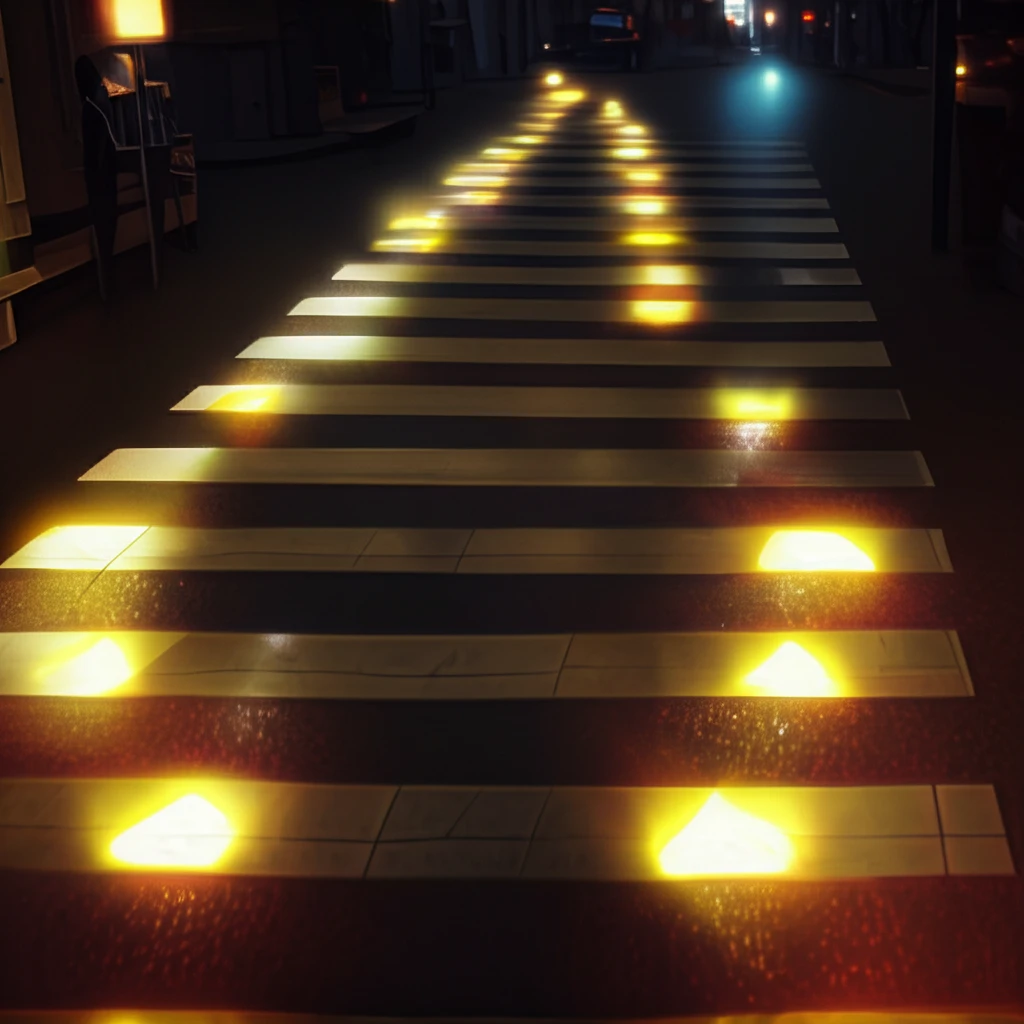
Smart Streets: How Advanced Sign Placement Can Save Lives
"Discover how strategically placed in-street signs are revolutionizing pedestrian safety and reducing accident risks on multi-lane roads."
Imagine a busy street where pedestrians and vehicles share the road. A common and dangerous scenario known as a multiple-threat accident occurs when a pedestrian attempts to cross a multilane road. A vehicle in the nearest lane yields close to the crosswalk, which obscures the pedestrian's view of the next lane, and the motorist's view of the pedestrian. This creates a hazardous situation where pedestrians are struck by vehicles in the adjacent lane, often resulting in severe injuries or fatalities.
According to the National Highway Traffic Safety Administration (NHTSA), pedestrian fatalities and injuries remain a significant concern. In 2015, there were 5,376 pedestrian fatalities and an additional 70,000 injuries in the United States. Over one quarter of these fatalities involved a failure to yield the right-of-way to pedestrians, highlighting the urgent need for effective safety measures.
Innovative solutions, such as the gateway configuration of R1-6 in-street signs, have emerged to address this challenge. These signs feature a yellow-green reflective backing with the message “YIELD TO PEDESTRIANS IN CROSSWALK.” Deployed on both edges of the roadway and on each lane line, this configuration has proven effective in increasing motorist yielding. Now, a new study looks at advanced placement of these signs to further improve safety.
The Science Behind Advanced Sign Placement: Improving Visibility and Response Time

A recent study compared the effectiveness of advanced placement of a gateway in-street sign configuration with traditional crosswalk placement on two multilane roads. The study used a reversal design, capturing alternating series of data points in each condition. Advanced placement of the sign produced comparable levels of yielding to the crosswalk placement but significantly increased the proportion of yielding at 50 feet or further from the crosswalk.
- Enhanced Visibility: Advanced placement provides motorists with earlier visual cues, allowing them to anticipate pedestrian crossings and adjust their speed accordingly.
- Increased Reaction Time: The additional distance gives drivers more time to react safely, reducing the risk of sudden stops or collisions.
- Reduced Multiple-Threat Accidents: By increasing the yielding distance, the risk of pedestrians being struck by vehicles in adjacent lanes is significantly reduced.
- Improved Sign Longevity: Placing signs outside the turning radii of larger vehicles at driveways or intersections can prevent damage and extend the lifespan of the signs.
The Future of Pedestrian Safety: Implementing Advanced Sign Strategies
Advanced placement of gateway configurations may improve the longevity of in-street signs and, most importantly, save lives by creating safer environments for pedestrians and drivers alike. As communities strive to reduce pedestrian fatalities and injuries, innovative approaches like advanced sign placement offer a promising path forward. By prioritizing visibility, reaction time, and compliance with traffic laws, we can build safer, more walkable streets for everyone.
